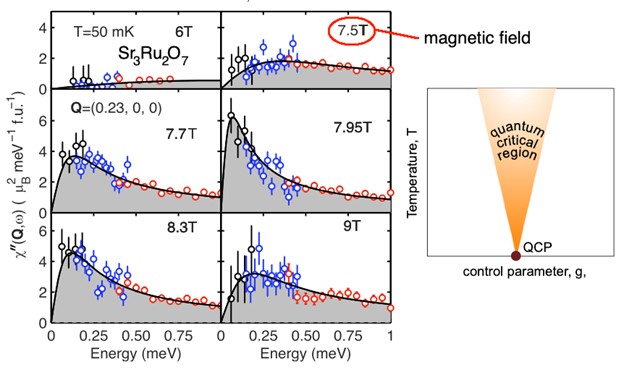Hayden group
Research Interests & Activities
My research group focuses of the novel properties of the electrons in solids. We study the collective spin and charge excitations novel electronic materials (Quantum Matter). We use both neutrons and x-rays to measure these excitations at large facilities such as the ISIS neutron and muon source and Diamond synchrotron here in the UK. Much of the work is on high-temperature cuprate superconductors including measurements of the high energy spin waves.
Spin and Charge Fluctuations in Cuprate Superconductors
Cuprate superconductors are fascinating materials based on planes of copper oxide which can be doped to produce superconductivity. They are special in that conduction electrons can move in the background of strong spin fluctuations. The interaction energies of the spins on neighbouring copper sites are some of the largest found in nature. We have been able to measure the resulting excitations up to energies of 0.5 eV with neutrons and x-rays. Recently we have been concentrating on the lower energy excitations, that is, those with energies comparable with the temperature. These are strongly coupled to the conduction electrons and may be responsible for the novel strange metal behaviour of the cuprates.
Quantum Phase Transitions
Quantum criticality is a unifying concept in the physics of correlated electron systems. It is where a phase transition is tuned to be at zero temperature by adjusting a control parameter. This can be achieved in practice by varying pressure, magnetic field or composition. In the region near the "quantum critical point" (QCP) in the temperature vs tuning parameter phase diagram, there will be zero-point and thermal fluctuations of the order parameter. For example, these might be collective magnetic fluctuations or excitations that can be important in determining the physical properties of materials and can lead to new phases. We can use scattering experiments to observe the critical fluctuations.

Current researchers and PhD students
PhD Students
- Jacopo Radaelli
